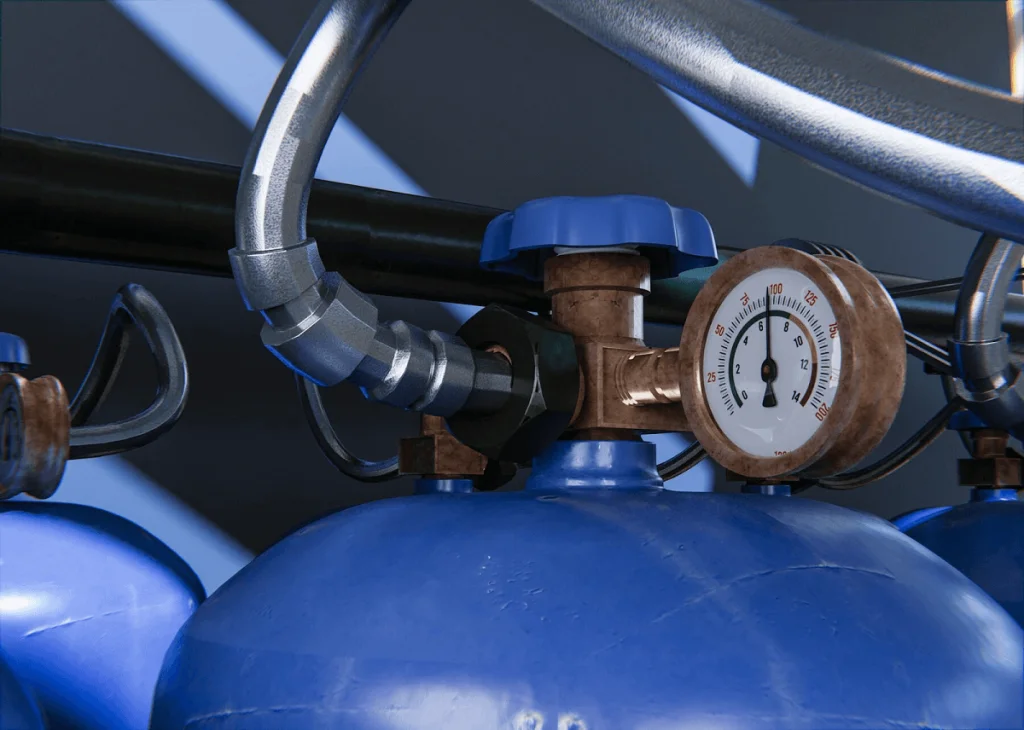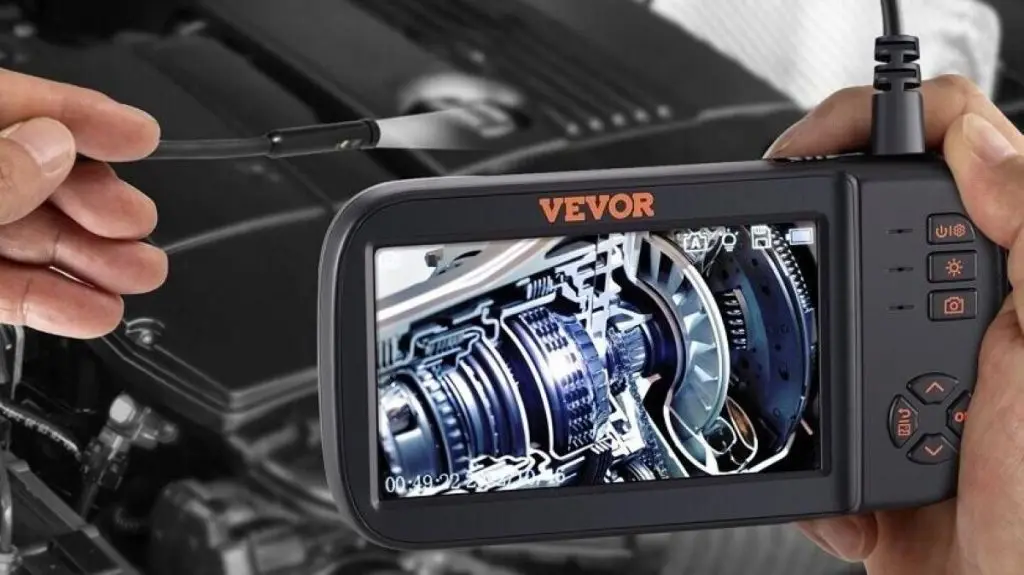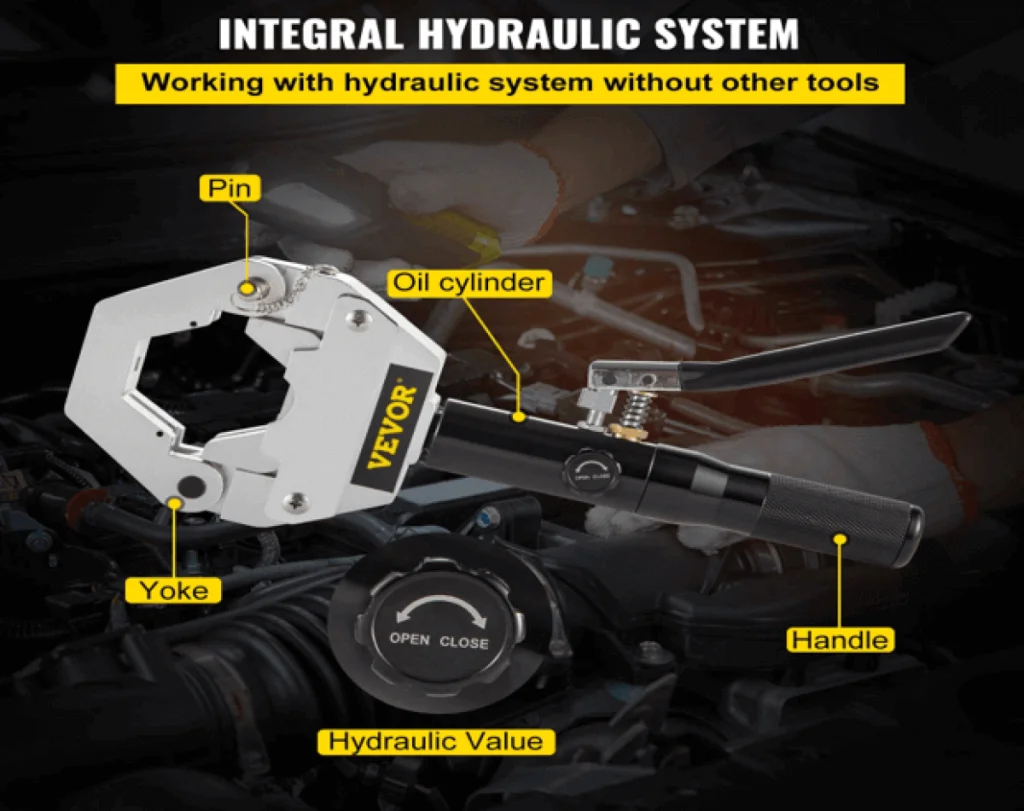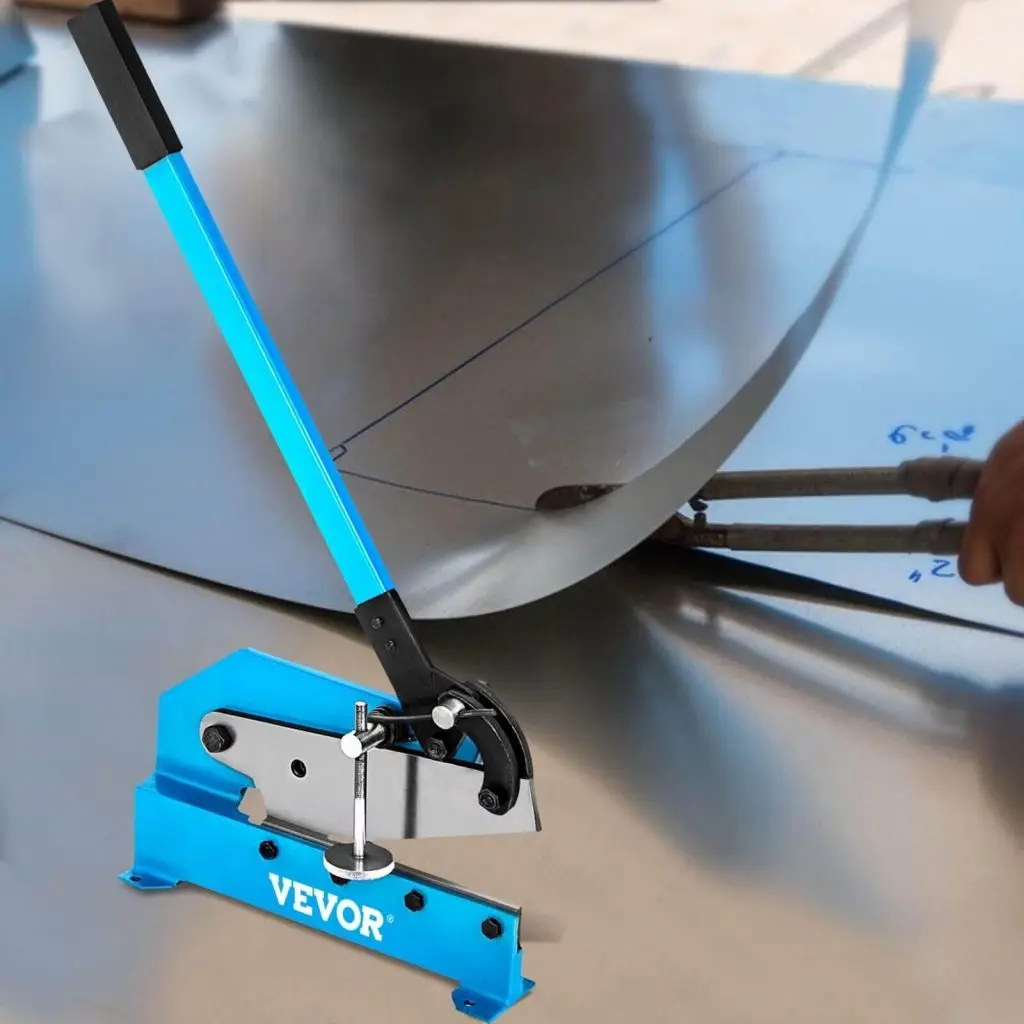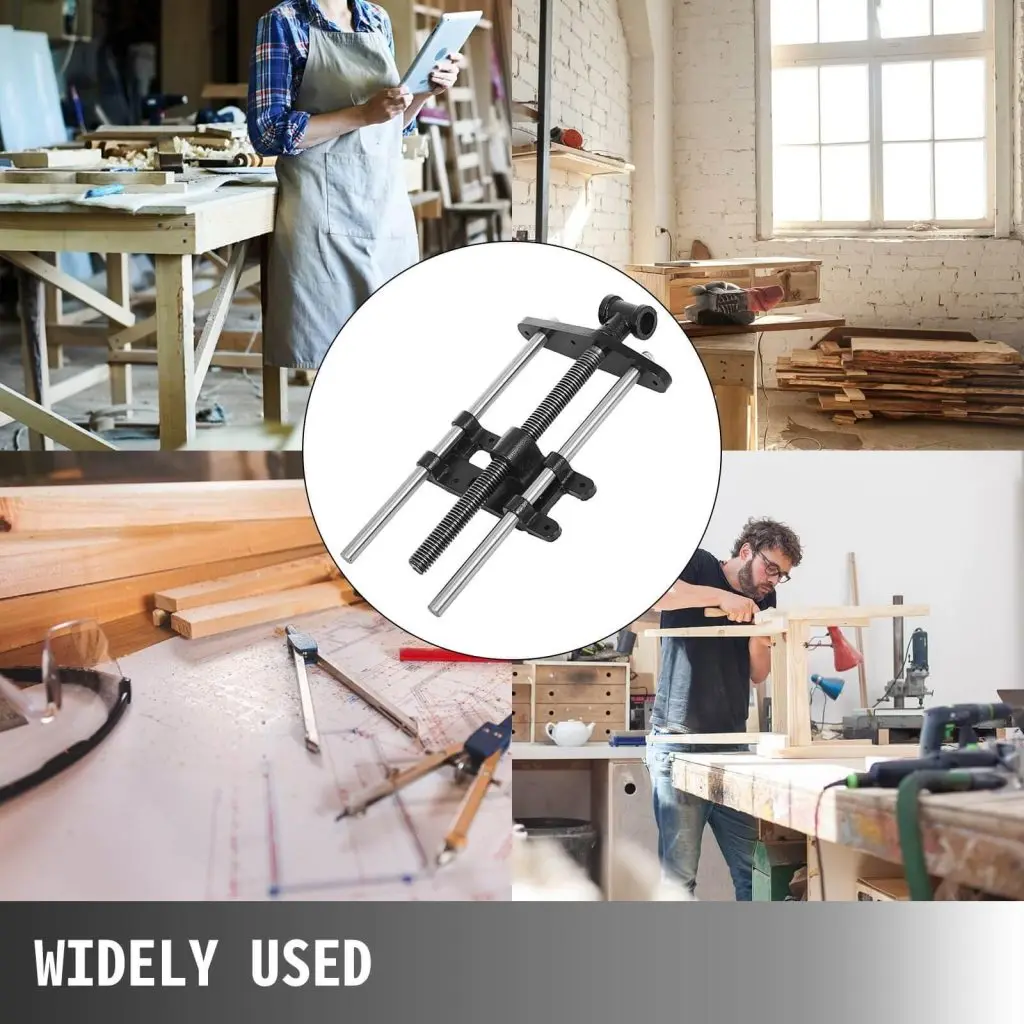Air compressors are multi-purpose tools that might greatly ease your work, regardless of whether you are a skilled contractor or just a weekend do-it-yourself type. Most compressors serve multiple workshops and job sites, powering nail guns, while others inflate car tires. However, you have to know how to work an air compressor the right and safe way!
Let’s get into great detail about the basics of air compressors, such as their working principles, how to install them, and how to use the air compressor for various reasons. We’ll also discuss important safety precautions and maintenance recommendations to guarantee that your compressor runs for a long period of time.
There are plenty of brands to go around, but VEVOR stands out in the field for reliability and friendliness when it comes to air compressors. Irrespective of whether you are an experienced or an expert or even a novice, VEVOR has many models that can stand varying needs. Let’s observe some of the potential ways one might employ air compression capacities.
Table of contents
What is an Air Compressor and How Does It Work?
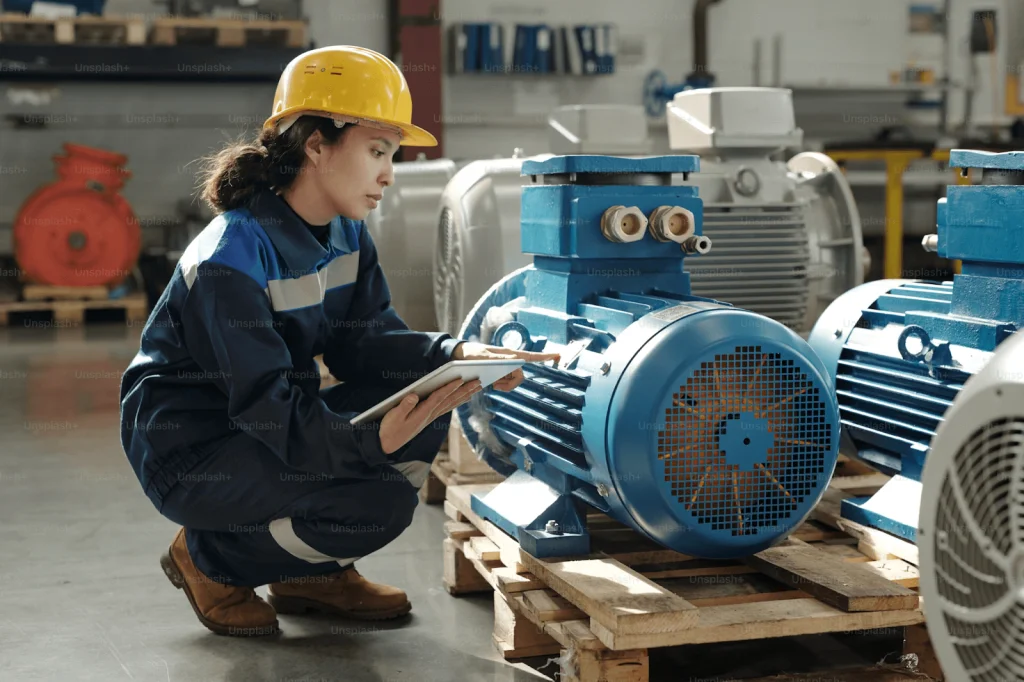
It’s important to know what an air compressor really is and how you need to prepare yourself before using one. An air compressor can be seen as a mechanical powerhouse that can convert air into a source of energy.
Let’s distinguish the main elements of an air compressor, which include their main parts and the scientific principles that make it operate:
The Basics of Air Compressors
An air compressor, in technical terms, is a device converting energy, usually taken from an electric motor or gas engine into potential energy stored in compressed air. It’s simply a device that draws in ambient air and compresses that air into a smaller volume to generate pressure.
Key elements of an air compressor include
- The motor serves as the core component of the compressor, supplying the necessary power to compress air.
- Tank: This stores the compressed air until it’s needed.
- The pressure gauge indicates the pressure level inside the tank.
- Regulator: This controls the output pressure of the air leaving the tank.
There are several types of air compressors available that can be used at home as well as for commercial purposes. The most common types include:
- Piston Compressors: These devices compress air using pistons.
- Rotary Screw Compressors: These work by compressing air continuously using rotating screws.
- Portable Compressors: They have high mobility making them ideal for business and residential uses.
How Does an Air Compressor Work?
Three primary stages are involved in the fundamental process of air compression:
- Intake: The compressor sucks in the air surrounding it.
- Compression: The pressure of air rises when it is compressed into a smaller volume.
- Release: To power tools or carry out other operations, compressed air is first held in the tank and then released through a valve as needed.
When you want to use the compressed air, simply attach your tool to the compressor with the hose, set the pressure for the specific task and you are good to use it!
How to Use an Air Compressor: Step-by-Step Guide
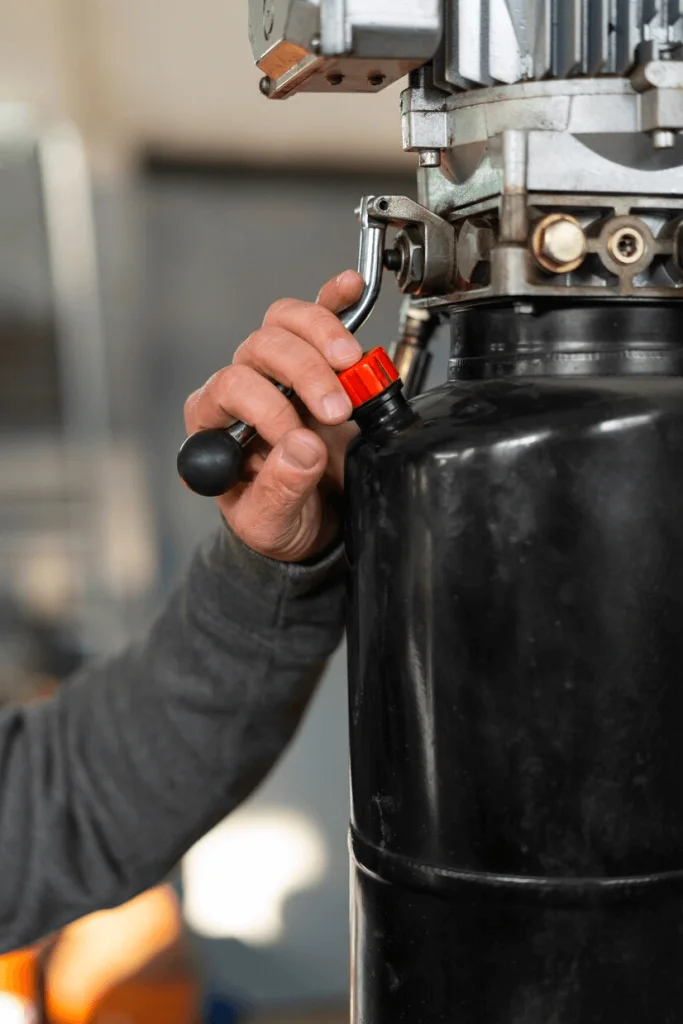
Having defined an air compressor and getting an insight into how the air compressor works let us go a little more practical. Starting up the air compressor might seem like a very daunting task at first, but with the right instructions, it can hardly be complex.
Recommended For Your Project
Here, we will explain to you how to use an air compressor right from the preparation stage to its usage with a power tool. Whether in a compact VEVOR model for home DIY or a big professional unit, these steps will ensure you handle and operate your compressor safely and efficiently.
Step 1: Air Compressor Setup
- Select the appropriate compressor: Make sure the compressor you’re using is appropriate for the tasks at hand. VEVOR offers many compressors with different configurations, ranging from light DIY work to strong industrial tasks.
- After removing the compressor from all packaging materials, place it in a well-ventilated location on a level, sturdy platform. For larger compressors, ensure that it rests perfectly level for optimal performance.
- How to attach hose to air compressor: To do this connect the air hose on the outlet valve of the compressor. Check if it is well fixed in position in order to avoid any chances of air leaks.
- Plug it in: On electric models refer to the compressor section and confirm whether the compressor is connected to a grounded socket. On gas-powered models, check your fuel and oil before striking the ignition.
Step 2: Understanding Air Pressure Settings
- Verify the prerequisites for your tool: For certain tools to function properly, different air pressures are required. Usually, the tool’s handbook or the tool itself provide this information.
- Modify the pressure: To adjust the output pressure to the requirements of your tool, turn the regulator knob. The pressure gauge will show you the current setting.
- Know your limits: Be aware of your compressor’s maximum pressure rating. VEVOR compressors typically have clear markings for maximum PSI (pounds per square inch).
Step 3: Connecting the Tools
- Choose the right fitting: Make sure you have the correct connector for your tool. Most VEVOR compressors come with a set of common fittings.
- Attach the tool: Connect your tool to the air hose. It should click when it is attached correctly.
- Look for any leaks: Keep an ear out for any hissing noises that might point to a connection air leak.
Step 4: Operating the Compressor Safely
- How to turn on an air compressor: Ensure all connections are secure and the drain valve is closed. Locate the power switch. On VEVOR models, this is typically clearly marked. Flip the switch to the “On” position. You should hear the motor start running. The compressor will now begin to build up pressure in the tank.
- Switch on the compressor, and it shall begin to build up pressure inside the tank. It will then automatically switch off the motor at maximum set pressure.
- Use your tool: Once you’ve pressurized the tank, you can start using your air-powered tool.
- Monitor the pressure: Monitor the pressure gauge. The compressor will switch on and off automatically, when you work in maintaining pressure.
Step 5: Turning Off and Storing Your Compressor
- Turn off: At the power switch, turn off the compressor after you’re finished.
- Release the pressure: Before filling the tank, turn on the pressure relief valve to let out all the remaining air we have not expelled.
- Drain moisture: To eliminate the condensation build-up the drain valve present at the base of the tank should be turned on. It also protects your compressor from rust hence increasing its service span.
- Store properly: Keep your compressor in a dry, clean place. VEVOR compressors frequently include handy handles or wheels for simple storage and transportation if they are portable models.
Common Mistakes to Avoid When Using an Air Compressor
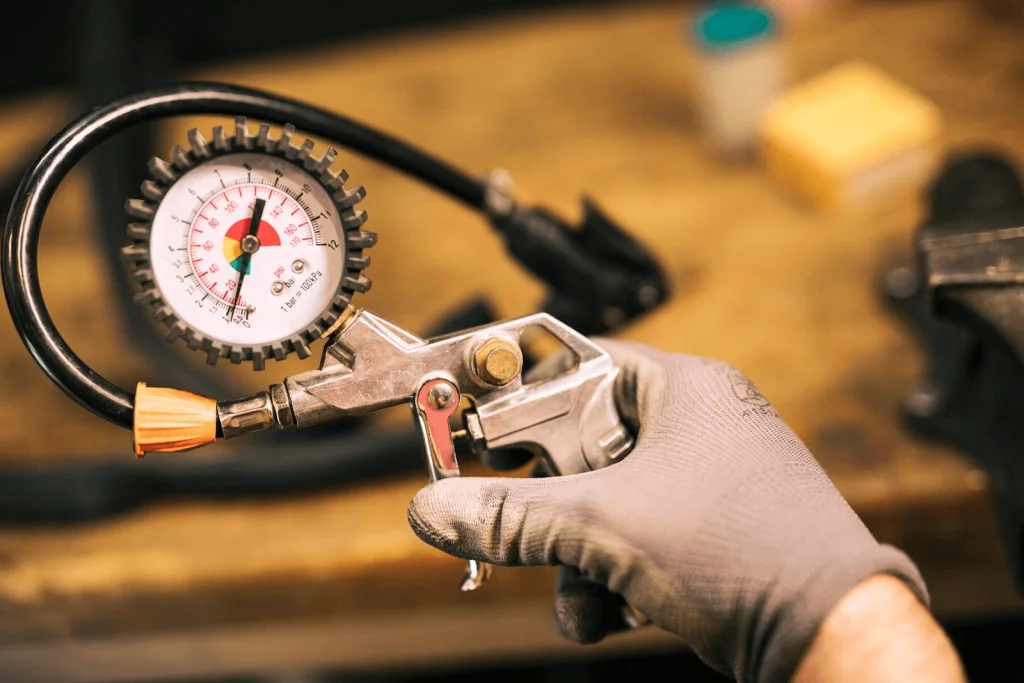
Most air compressor operators, no matter how professional they are, can sometimes be wrong. These errors could vary from being ineffectively implemented to something hazardous. Now let us show you a few mistakes people tend to make and explain how you can avoid them.
Incorrect Pressure Settings
Setting the wrong pressure can lead to poor tool performance or even damage. Too low, and your tools won’t work efficiently. Too high, and you risk damaging your tools or workpieces. Always check the recommended PSI for each tool you use.
Overloading the Compressor
Using a tool that needs more air than your compressor can supply may result in subpar performance and may put undue pressure on the engine. You can select a compressor from VEVOR’s assortment of models with varying capacities to meet your requirements.
Improper Hose Connections
Air leaks from weak connections can reduce efficiency and potentially represent a safety concern. Before doing any work, ensure that all fittings are tight and secure.
How to Maintain Your Air Compressor for Long-Term Use
An air compressor is a capital-intensive investment that like every other important possession needs time and attention to yield optimum returns. Maintenance doesn’t solely serve as a prolongation of the life of your compressor but ensures it performs optimally especially when you require it.
Here is the checklist for key maintenance steps that you should perform to ensure your VEVOR air compressor is in the right shape for years
Regular Maintenance Tips
- To ensure clean air intake, clean or replace air filters on a regular basis.
- In oil-lubricated models, check the oil levels and replenish them as recommended by the manufacturer.
- In belt-driven versions, check belts for wear and appropriate tension.
VEVOR compressors are designed for easy maintenance, with accessible components and clear instructions in the user manual.
Draining the Tank
After every usage, develop the habit of draining the moisture from your tank. By stopping rust and corrosion inside the tank, this little action will greatly increase the lifespan of your compressor.
Replacing Parts
Over time, fittings may wear out or hoses may start to leak. Replace these promptly to maintain efficiency. In order to maintain your equipment operating at its best for many years, VEVOR provides replacement parts for its compressors.
Key Safety Tips When Using an Air Compressor
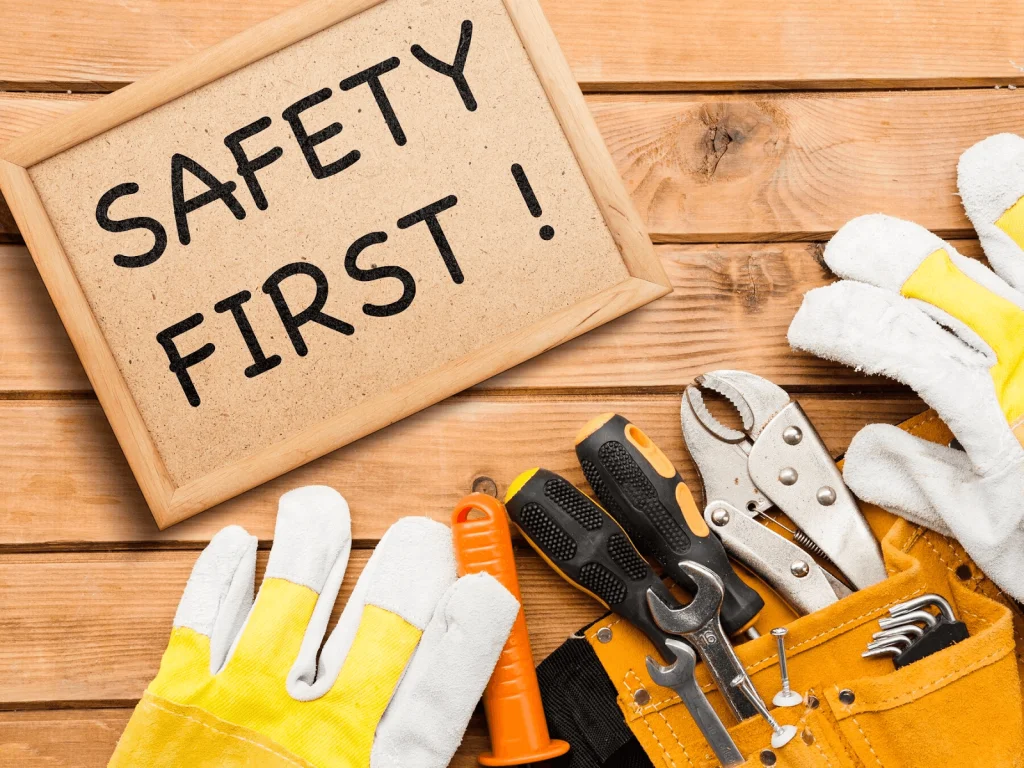
When handling any power tool, safety should always come first, and air compressors are no different. Although VEVOR compressors are designed for safety, it is critical to understand and follow the proper safety precautions.
Let’s take a look at some important safety tips designed to safeguard you, your work environment, and your equipment. When followed, these precautions allow you to maximize the benefits of your air compressor while minimizing potential risks.
Wearing Protective Gear
Wear protective eyewear at all times to shield your eyes from flying debris. Use earplugs as well if your compressor is noisy. When handling compressed air, wearing gloves can provide additional safety.
Checking for Air Leaks
Check for air leaks in your compressor, hoses, and connections on a regular basis. Leaks can be found by applying a simple solution of soapy water to connections; if bubbles appear, there is a leak.
Why Choose VEVOR Air Compressors?
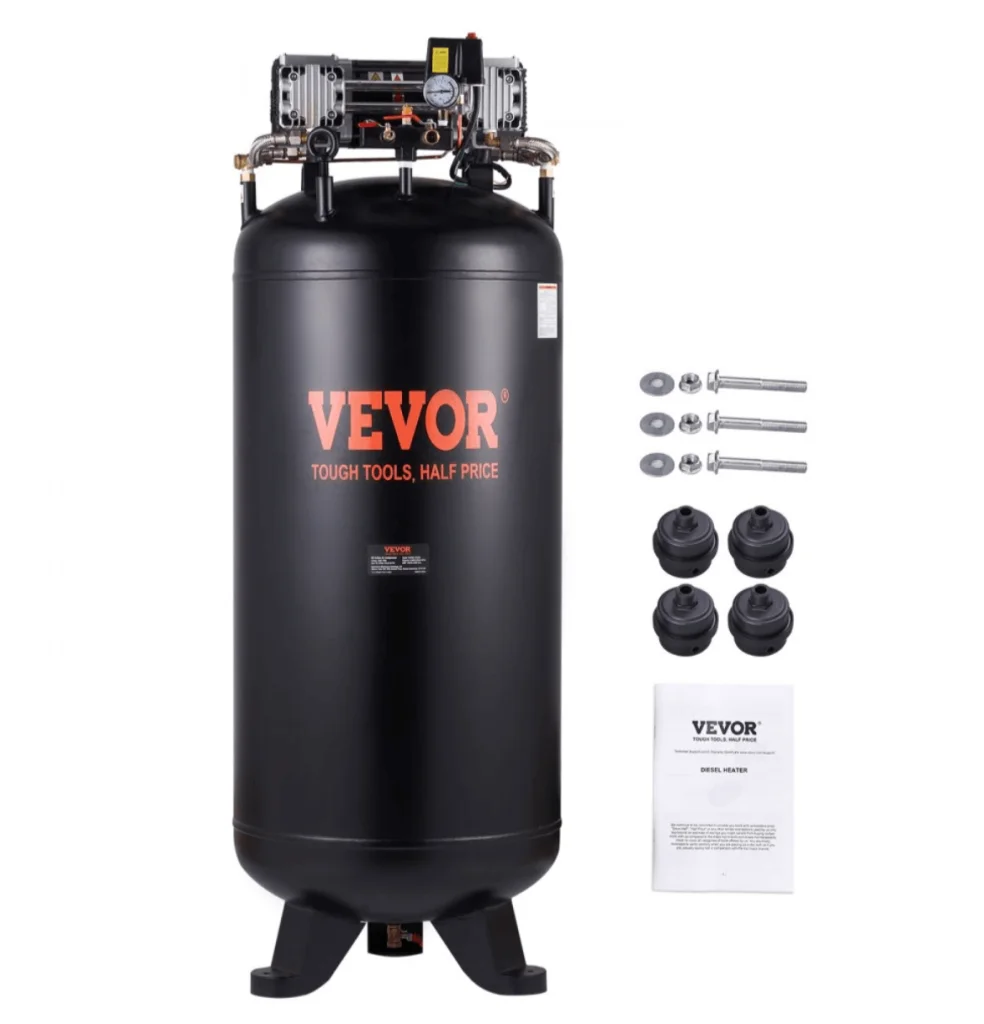
When it comes down to buying an air compressor, it might seem there are dozens of such devices out there, and you may wonder why VEVOR is special. Here are some reasons why anyone who is serious about investing in air-powered equipment should purchase a VEVOR compressor, from their well-built to their ease of use.
VEVOR Air Compressor Features
VEVOR offers a wide range of air compressors known for their:
- High-quality performance: Powerful motors and efficient compression systems.
- Durability: Made with fine materials that can effectively withstand daily usage.
- Versatility: Ideal for all types of application spectrum beginning from home improvement exercise to manufacturing industries.
- User-friendly design: clear instructions, convenient buttons, and indicators that are easily readable.
Customer Testimonials
When selecting a VEVOR air compressor, real-world feedback from consumers identifies both the advantages and disadvantages to take into account:
Power sports enthusiast Ralph commends the VEVOR 80 Gallon Air Compressor for its dependability and strength: “This compressor is appropriate for a variety of pneumatic tools and equipment since it has a 6.5 HP engine and a 2-stage compression mechanism that can provide a maximum pressure of 145 PSI. Even with large loads, rapid and effective operation is guaranteed by the remarkable airflow rating of 15.5 SCFM at 90 PSI.”
One satisfied customer, Veee8, wrote: “This compressor has been excellent for operating our shop. We selected this one since it complied with our CNC machine’s specifications and has been quite effective. With our configuration, the 80-gallon tank does not run very frequently.
Although he points out several issues, Ian, another user, praises the capacity and filling speed: “The capacity is great for the price, and it seems to fill relatively fast.” 86 dB is not at all quiet. I believe VEVOR ought to produce a 230v single-phase version of this.”
Key characteristics of VEVOR compressors are highlighted in these testimonials:
- Rapid filling and large capacity for effective operation
- Strong performance appropriate for usage in a professional setting
- Long-term dependability and durability
- Compatibility with CNC machines and other industrial equipment
Keep in mind that certain models can need particular power configurations, so it’s crucial to confirm the specifications for your location and planned application.
Competitive Pricing and Support
VEVOR is dedicated to offering reasonably priced, high-performing air compressors. Their customer service representatives are renowned for being prompt and friendly, making sure you get the most out of your compressor.
Ready to experience the VEVOR difference? Check out their range of air compressors today!
Conclusion: Mastering the Use of Your Air Compressor
To get the best out of an air compressor it’s important that the basics are understood and safety precautions followed. Following the guidelines that we have outlined here—starting from the initial configuration of your compressor to well-thought storage—will make you ready to take on a wide range of tasks with confidence.
For, after all, a quality compressor is an investment in your craft. The air compressors by VEVOR deliver the needed reliability, performance, and value that professionals and DIY enthusiasts require. Durable designs that ensure a smooth start make these easy to operate.
Ready to power up your projects? Get your VEVOR air compressor today and experience the difference that quality and performance can make in your work!

